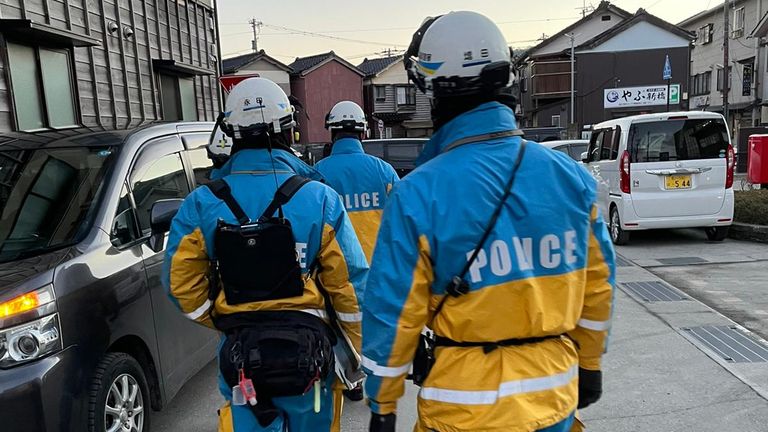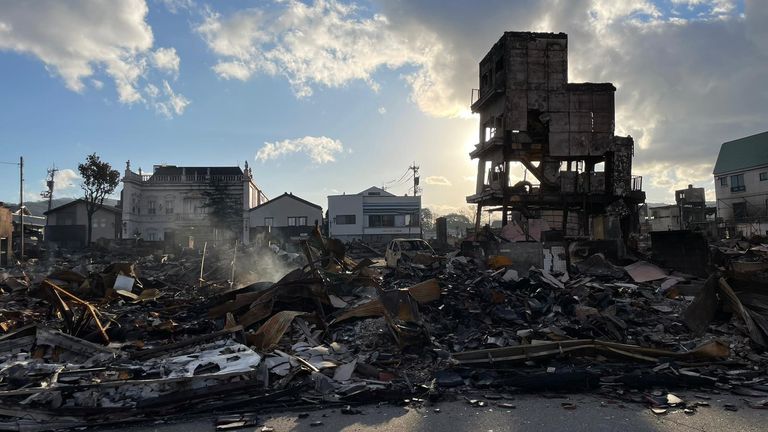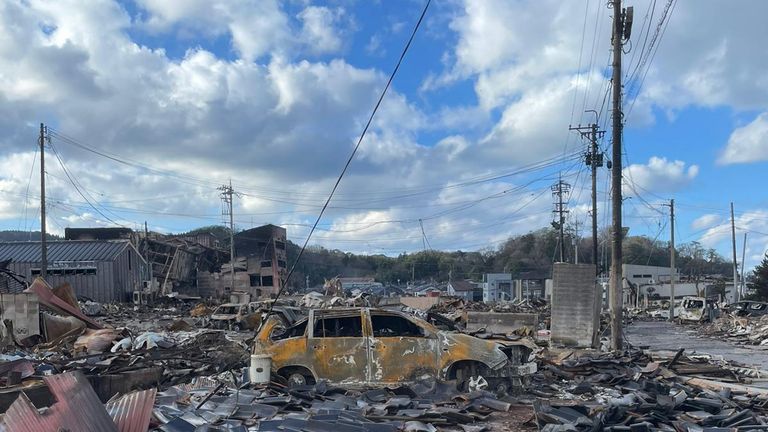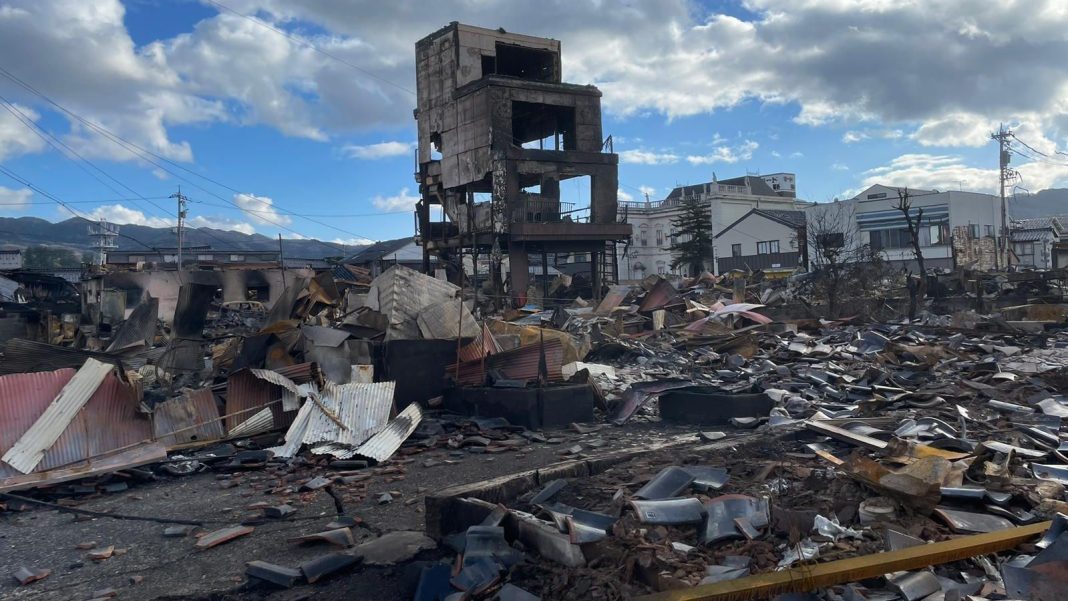In the city of Wajima, there is barely a building untouched.
Home after home lies crumbled as rubble, their traditional Japanese roofs smashed down to ground level.
Even those that are still standing are visibly not structurally sound, almost all sit at a precarious angles without windows, doors or walls.
Wajima is at the very heart of the devastation, for a corner of Japan that is currently littered with it.
Down one street an entire five-storey building lies flat on its side. A solitary man combs through the rubble beneath it with nothing more than a garden rake, before sitting across from the wreckage and weeping into the arms of his son.
But the very worst of the devastation can be found in an area of the city that was, until this week, an old market district, a place where small businesses interspersed with traditional wooden houses.
It was here that the quake caused a devastating fire, that ripped through block after block.
It is now not much more than a mangle of smouldering ash, broken glass and twisted metal. The frames of a few larger buildings tower hollow over the rest, power lines dangle untethered.
Photos taken from a plane show the extent of the fire in Wajima. Pic: AP

Emergency services respond
Survivors are gathering here to survey what they’ve lost, we see one man desperately clawing at a small area with his hands.
It is here we meet an elderly lady of 83, she didn’t want to give us her name, but she showed us where her house had once stood.
Read more:
Villagers pick up the pieces after devastating earthquake
Japan residents recall moment earthquake hit
She describes how she survived the initial earthquake, only to lose everything just a few hours later to the flames.
It’s hard to imagine what she’s been through, she heard her trapped neighbours calling for help, but she couldn’t do anything, the flames were spreading and she had to evacuate.
Five of those neighbours died in the fire, “I feel so terrible I couldn’t help” she says, “At the moment I am still in shock, I think it will hit me later, these people were my friends.”
Others also lost their lives here, some because they were heeding tsunami warnings and took shelter in taller buildings which they could then not escape.


Seventy-two hours on from the quake and the window for finding people alive is narrowing, it’s bitterly cold here and the rescuers know it’s now a race against time.
They are going door to door asking people if they are aware of any neighbours still unaccounted for, most say they don’t know, they evacuated and have only just returned.
Rescue efforts have now largely moved to the more isolated areas outside the main city centre, but many believe there are still bodies buried here.
And attention is also turning to the survivors. In this city alone 11,000 are sheltering in evacuation centres, there is no water, no gas and no electricity.
Local leaders have been sharply critical of how little aid has made its way in and it is largely volunteers who have filled the gap.
One food vendor we meet drove six hours here from his home in a nearby city to give out hot meals to desperate people who would not have them otherwise.
“I made 1,500 portions of fried noodles,” he says. “I started to cook at 10am, by 2pm it was all gone.”
The state of the roads explains why it’s so hard. There is only one route to Wajima still open, it is littered with landslides, boulders and cracks in the tarmac.
We drove and stood in traffic for nearly seven hours to make it in, aid trucks face similar obstacles.
Even as we packed up to leave, the earth shook again beneath our feet, a sign if any was needed, that this emergency is not over.







